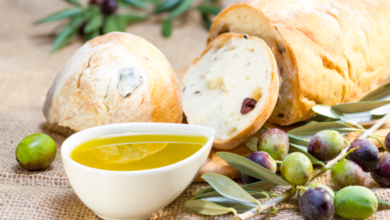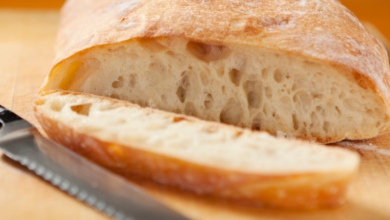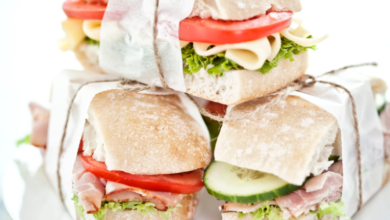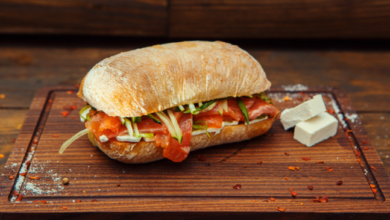Let’s Find Out What Ciabatta Bread Looks Like!
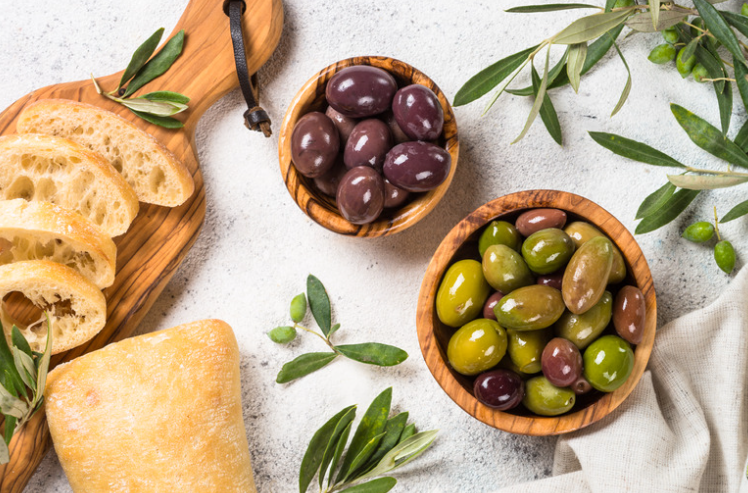
What To Know
- Ciabatta bread is a versatile ingredient that can be used in a variety of ways.
- Whether it’s a freshly baked loaf or a toasted slice, ciabatta bread adds a touch of rustic charm to any culinary experience.
- Ciabatta bread has a flatter shape, a crispier crust, and a more open crumb structure than French bread.
Ciabatta bread, with its unique texture and rustic charm, has become a staple in bakeries and kitchens worldwide. But what exactly does ciabatta bread look like? This comprehensive guide will delve into the visual characteristics of this beloved bread, unraveling its distinctive appearance and providing insights into its unique qualities.
The Shape and Size of Ciabatta Bread
Ciabatta bread is typically shaped into a flat, oval loaf. Its shape resembles a slipper, hence the origin of its name, which translates to “slipper” in Italian. The loaves vary in size, ranging from small individual portions to large family-sized loaves.
The Crust of Ciabatta Bread
One of the most striking features of ciabatta bread is its crust. It is thin, crispy, and golden brown in color. The crust is often dusted with flour, giving it a rustic and artisanal appearance. The crispness of the crust provides a satisfying crunch with each bite.
The Interior of Ciabatta Bread
In contrast to its crispy crust, the interior of ciabatta bread is soft and chewy. It has a distinctively open and airy crumb structure, characterized by large, irregular holes. This unique crumb allows for the bread to absorb sauces and spreads easily, making it perfect for sandwiches and dipping.
The Color of Ciabatta Bread
The color of ciabatta bread ranges from a light ivory to a golden brown. The color is primarily determined by the type of flour used and the duration of baking. A longer baking time results in a darker color.
The Texture of Ciabatta Bread
The texture of ciabatta bread is a combination of crispness and chewiness. The crust provides a satisfying crunch, while the interior yields to a soft and airy bite. The bread is light and fluffy, with a slightly chewy texture that makes it enjoyable to eat.
The Flavor of Ciabatta Bread
Ciabatta bread has a mild and slightly tangy flavor. It is often described as having a “nutty” or “yeasty” taste. The bread’s flavor profile makes it versatile and suitable for pairing with various dishes, from salads to soups to grilled meats.
The Uses of Ciabatta Bread
Ciabatta bread is a versatile ingredient that can be used in a variety of ways. It is commonly used for sandwiches, bruschetta, and dipping. Its crusty exterior and airy interior make it perfect for absorbing sauces and spreads. Ciabatta bread can also be sliced and toasted for a crispy and flavorful addition to any meal.
Conclusion: Embracing the Rustic Charm of Ciabatta Bread
Ciabatta bread’s unique appearance is a testament to its artisanal nature. Its flat, oval shape, crispy crust, airy crumb, and mild flavor make it a beloved bread that can be enjoyed in various settings. Whether it’s a freshly baked loaf or a toasted slice, ciabatta bread adds a touch of rustic charm to any culinary experience.
FAQ
1. What is the difference between ciabatta bread and French bread?
Ciabatta bread has a flatter shape, a crispier crust, and a more open crumb structure than French bread. French bread is typically longer and has a chewier interior.
2. Can I make ciabatta bread at home?
Yes, it is possible to make ciabatta bread at home. However, it requires a long fermentation process and a high-hydration dough, which can be challenging for beginners.
3. What is the best way to store ciabatta bread?
Ciabatta bread can be stored at room temperature for up to 3 days. For longer storage, it can be frozen for up to 3 months.
